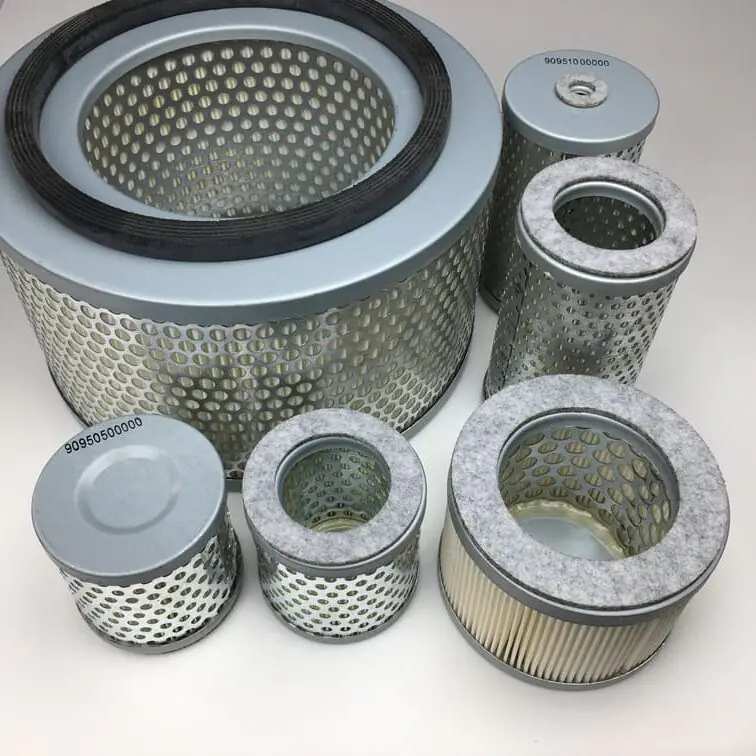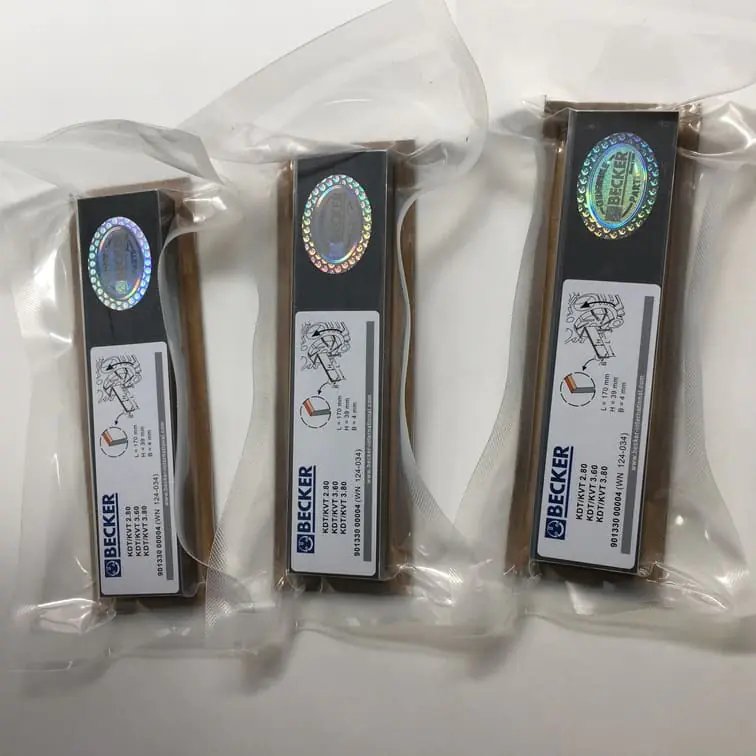Do Air Operated Vacuum Pumps Work?
Air operated vacuum pumps are devices that utilize compressed air to create a vacuum, providing an effective solution for various industrial and laboratory applications. With rising interest in efficient and flexible vacuum generation, air operated vacuum pumps have become a key choice in many settings. This article will explore whether air operated vacuum pumps work effectively, their mechanisms, benefits, and potential limitations. Whether you are evaluating air pumps for industrial processes or laboratory setups, understanding their functioning is essential for making the right decision.
Understanding Air Operated Vacuum Pumps
An air operated vacuum pump, also known as a Venturi vacuum pump, relies on compressed air to create a vacuum. The pump functions on the principle of the Venturi effect, which involves creating a low-pressure region by accelerating compressed air through a narrow nozzle. This method of vacuum generation does not require electricity, making it flexible and often more economical in certain applications.
How Does an Air Operated Vacuum Pump Work?
Air operated vacuum pumps work by forcing compressed air through a Venturi nozzle. This rapid movement creates a region of low pressure, effectively drawing in air from the surrounding environment. As a result, a vacuum is formed, which can then be used for various applications, including material handling, vacuum sealing, or laboratory experiments.
The general process can be summarized as follows:
- Compressed Air Supply: The pump is connected to a compressed air source.
- Venturi Nozzle: Compressed air is forced through a Venturi-shaped nozzle, where its velocity increases.
- Vacuum Formation: The increased velocity results in a drop in pressure, creating a vacuum.
- Airflow: This vacuum can be used to move air or other gases from a closed system, reducing the pressure within.
| Component | Description |
|---|---|
| Venturi Nozzle | Narrow section of the pump where compressed air flows and creates a vacuum. |
| Compressed Air Supply | Provides the energy needed to create the vacuum. |
| Discharge Port | Where the excess air is released from the pump. |
“Air operated vacuum pumps are effective, simple, and have no moving parts, which makes them ideal for various low-maintenance applications.” – Senior Engineer at Industrial Applications Forum
Applications of Air Operated Vacuum Pumps
Air operated vacuum pumps find a wide range of applications due to their reliability and the flexibility they offer. Here are some common uses:
1. Material Handling Systems
Air operated vacuum pumps are frequently used in material handling applications such as pneumatic lifting, picking up and transporting objects, and other processes that require suction. For example, many assembly lines use these pumps to move items without human intervention.
- Advantages: No risk of electrical sparks, which makes them safe for handling sensitive items.
- Flexibility: These pumps can be installed directly into automated systems.
2. Vacuum Sealing and Packaging
In the packaging industry, air operated pumps are often used for vacuum sealing. The compressed air helps draw out excess air from a package, allowing for better preservation of goods.
- Food Industry: Ideal for vacuum packaging perishable food products.
- Cost Efficiency: Compared to electric pumps, air operated units can provide significant energy savings in the long run.
3. Laboratory Applications
Laboratories use air vacuum pumps for a range of purposes, including vacuum filtration and desiccation. The simplicity of operation and the absence of electrical components make these pumps ideal for controlled environments.
Pro Tip: Always ensure a steady supply of compressed air, as fluctuations can affect the performance of the pump and may lead to inconsistent vacuum levels.
Advantages of Air Operated Vacuum Pumps
There are several notable advantages to using air operated vacuum pumps, which make them suitable for diverse applications:
1. No Moving Parts
Air operated vacuum pumps have no moving parts, which significantly reduces wear and tear. This results in lower maintenance requirements and contributes to the longevity of the system.
- Low Maintenance: Since there are no moving components, these pumps require little to no maintenance.
- Durability: Fewer parts mean fewer failure points, increasing reliability.
2. Explosion-Proof
Since these pumps do not require electricity, they are intrinsically safe for use in hazardous or flammable environments. This makes them ideal for industries dealing with chemicals or flammable substances.
- Suitable for Hazardous Areas: Ideal for chemical and petrochemical industries where safety is a priority.
3. Flexibility and Portability
With the need only for compressed air, these pumps can be used in various locations, including remote or temporary setups where electricity is not readily available. This makes them versatile tools for both permanent and mobile operations.
- Easy to Relocate: Light-weight and compact.
- Minimal Setup Requirements: Simply connect to a compressed air source.
Potential Limitations of Air Operated Vacuum Pumps
While air operated vacuum pumps offer many benefits, they do have some limitations that users should be aware of before deciding to implement them.
1. Dependence on Compressed Air
The biggest limitation is the requirement for a steady and adequate supply of compressed air. Compressed air can be expensive to produce, and maintaining this supply can sometimes outweigh the benefits.
- Energy Costs: If compressed air is not available, the cost to generate it may offset the pump’s advantages.
- Air Quality: The quality of compressed air is crucial—impurities can reduce the pump’s efficiency.
2. Limited Vacuum Power
Compared to some electrically operated vacuum pumps, air operated pumps may have lower vacuum power. They are typically used for light to medium duty applications and may not be suitable for high-vacuum requirements.
- Lower Efficiency: Not ideal for applications requiring extremely low pressures.
- Capacity Constraints: Limited to moderate flow rates, which may be insufficient for some industrial needs.
3. Noise Levels
Air operated vacuum pumps can be relatively noisy due to the movement of compressed air. This is particularly noticeable in smaller workspaces or laboratory environments.
- Workplace Considerations: Additional noise dampening measures may be required.
- Hearing Protection: In some settings, operators may need protective gear.

Comparing Air Operated and Electrically Operated Vacuum Pumps
When deciding between an air operated vacuum pump and an electrically operated pump, it’s essential to understand their key differences:
| Feature | Air Operated Vacuum Pump | Electrically Operated Vacuum Pump |
|---|---|---|
| Power Source | Compressed Air | Electricity |
| Maintenance | Minimal due to no moving parts | Requires regular checks and servicing |
| Vacuum Power | Moderate | High, capable of achieving lower pressures |
| Portability | Highly portable, lightweight | Limited by electrical access |
| Safety in Hazardous Areas | Explosion-proof, ideal for flammable settings | Not typically suitable for explosive environments |
How to Choose the Right Air Operated Vacuum Pump
Selecting the right air operated vacuum pump involves considering a few critical factors based on your specific needs:
1. Vacuum Level Requirements
Consider the level of vacuum needed for your application. Air operated pumps are well-suited for medium-range vacuum levels, but for high-vacuum needs, an electrically operated pump may be a better choice.
2. Air Supply Capacity
Ensure you have sufficient compressed air capacity to operate the vacuum pump effectively. The efficiency of the vacuum generation process depends directly on the quality and consistency of the air supply.
3. Application Environment
The environment in which the pump will operate is also important. If the pump is to be used in a hazardous environment, the lack of electricity makes air operated pumps a safer choice. For laboratory or food processing environments, consider noise levels and hygiene requirements.
- Food and Pharma: Choose models made from stainless steel or other food-grade materials.
- Hazardous Environments: Opt for explosion-proof designs to meet safety standards.
“When choosing a vacuum pump, the key is to balance efficiency with the specific needs of your application. No one pump suits all tasks, so make sure to assess your unique requirements.” – Industrial Systems Specialist
Internal Links for More Information
For more in-depth knowledge on related vacuum pump components and options, refer to these resources available at vacuumpumppart.com:
- 90137301010 | WN 124-205 Original Becker Set of 10 Vanes – Discover more about vacuum vane sets and how they contribute to pump efficiency.

- Becker Air Filters – Learn how to keep your air vacuum systems clean and functioning optimally with Becker air filters.

Frequently Asked Questions
1. Are air operated vacuum pumps suitable for heavy-duty industrial applications?
Air operated vacuum pumps are generally better for light to medium-duty tasks. For heavy-duty applications requiring high vacuum power, an electrically operated pump might be more suitable.
2. Can I use an air operated vacuum pump for laboratory purposes?
Yes, air operated vacuum pumps are often used in laboratory settings due to their low maintenance, portability, and lack of electrical components, making them ideal for controlled environments.
3. How much compressed air is needed for an air operated vacuum pump?
The amount of compressed air needed depends on the specific model and the desired vacuum level. Always ensure a steady, high-quality supply for optimal performance.
4. Are air operated vacuum pumps noisy?
Yes, these pumps can be noisier than their electric counterparts due to the movement of compressed air. Noise dampening measures may be necessary in sensitive environments.
5. What is the primary advantage of using air operated vacuum pumps?
The main advantages are their lack of moving parts, explosion-proof nature, and portability. These features make them reliable, low-maintenance, and safe for hazardous environments.
Conclusion
Air operated vacuum pumps offer a flexible, reliable, and portable solution for creating vacuum without electricity. They work effectively in a range of applications, from material handling to packaging, especially where safety and portability are priorities. However, their limitations, such as dependence on compressed air and moderate vacuum power, mean they may not suit all needs. Understanding these factors will help you make the right choice for your specific requirements. To explore vacuum pump parts and accessories further, visit vacuumpumppart.com. Investing in the right vacuum solution ensures efficiency, safety, and reliability in your operations.






